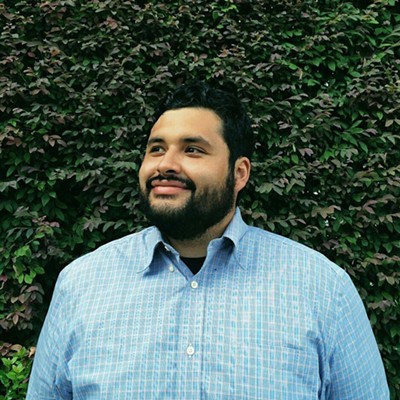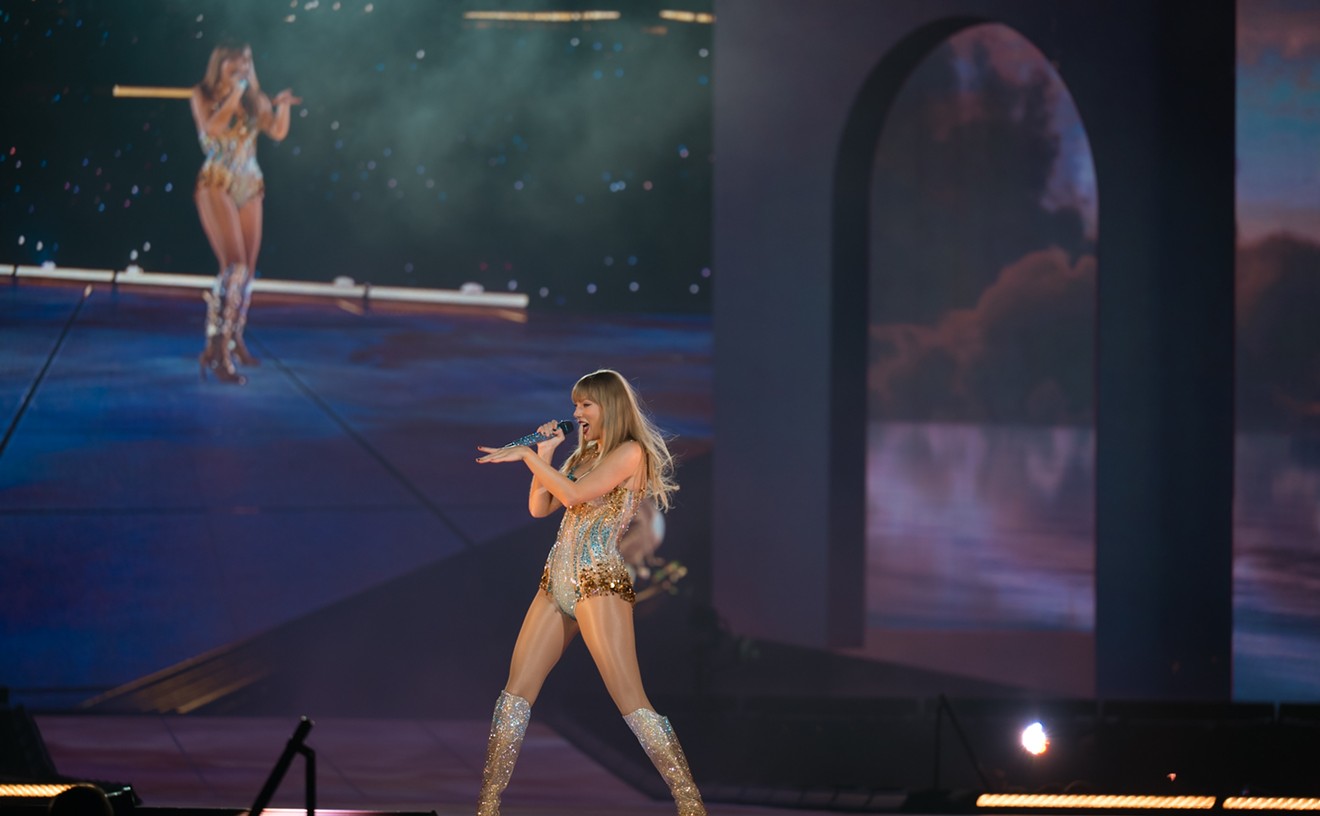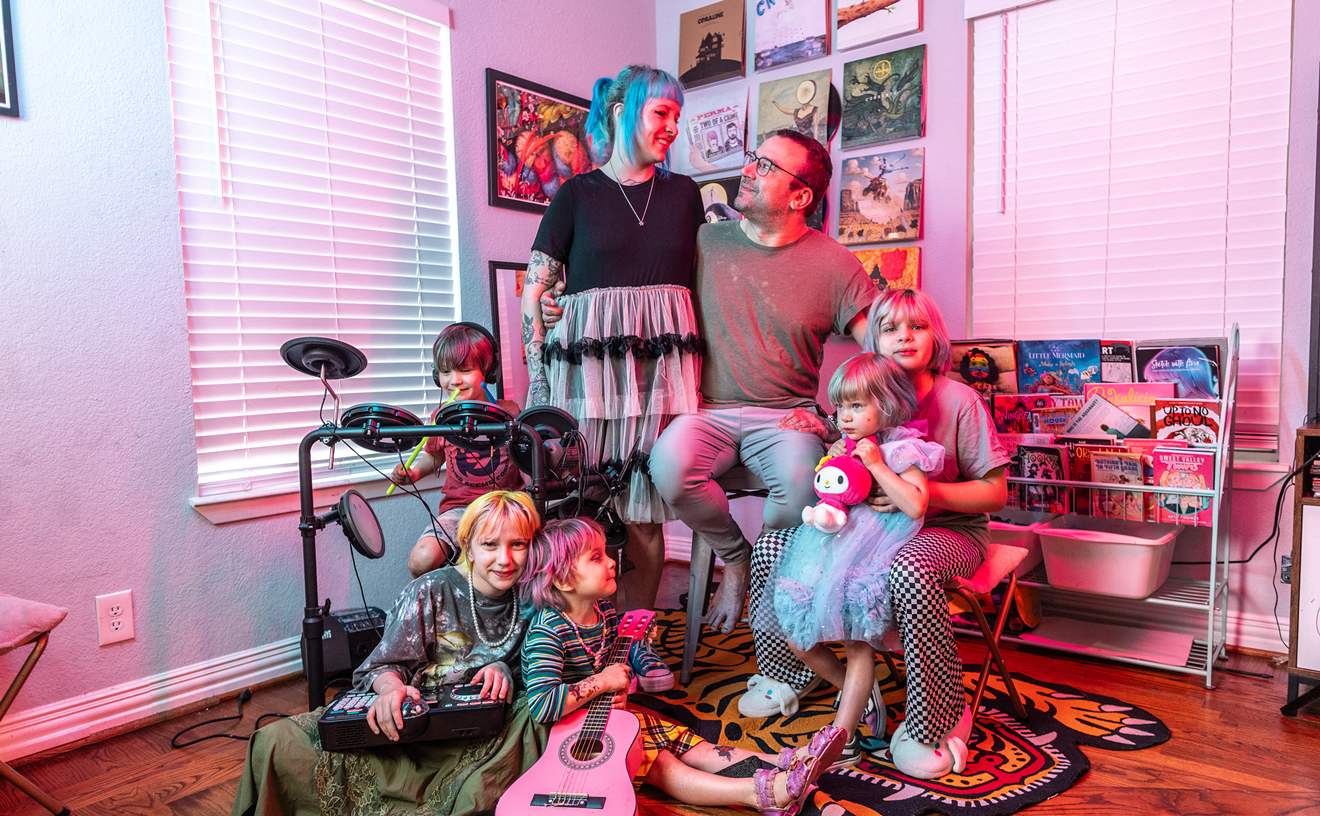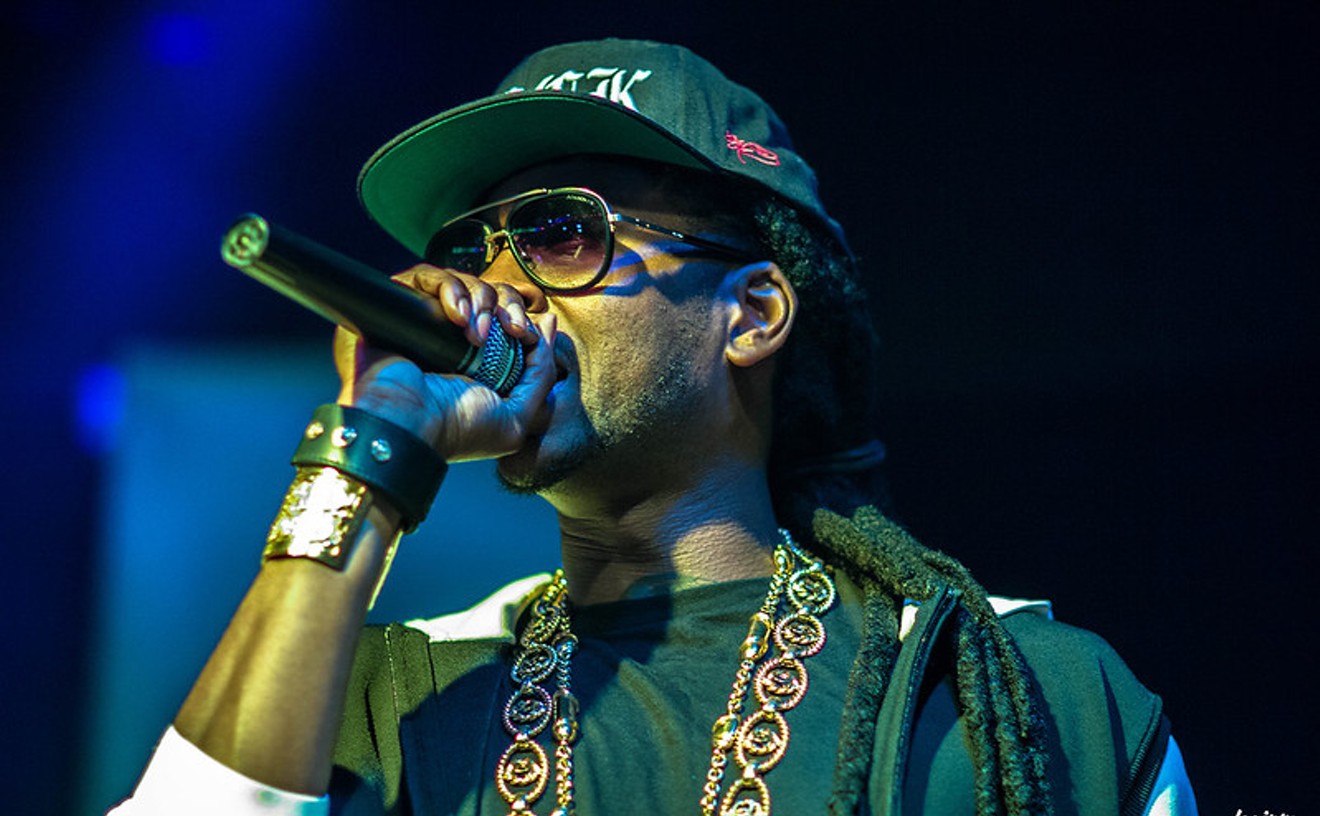When Cold Cris isn’t on tour with Erykah Badu, he can usually be found at a local hip-hop event supporting a new generation of acts. He’s a well-known figure in the scene and many know him as an OG, but it’s hard to believe anyone really knows his whole story. Considering the fact that he’s been at the epicenter of hip-hop culture in Dallas since the early '80s, Cold Cris has over three decades of firsthand experience to speak on. It's enough to fill a memoir, let alone an article.
In 1982, when Cris Parker was in junior high, he got his first taste of hip-hop culture when his friend Michael Webb turned him on to pop-and-lock dancing. He became obsessed with dancing and particularly breakdancing. Eventually he joined a crew called the Star City Breakers, with Rob Free, and they became one of the city’s best breakdancing outfits. The group’s breakout success earned them agents, sponsorships and commercial opportunities, such as TV spots and print ads for Sanger-Harris, a prominent department store that later became Foley’s. From there, the bug began to grow and Cris immersed himself more and more into the hip-hop scene, eventually becoming a DJ and emcee.
Through the '80s and into the mid-'90s, Cris would have an adventurous career that brought him seemingly to the edge of stardom on more than one occasion. After turning down a lucrative commercial opportunity to be the face of a rap character named Kra Zee White Boy, who was essentially a white version of the raunchy 2 Live Crew, he and DJ Baby G formed a group known as 2AWK. Later, along with a producer named Hype Dog, the pair became Mad Flava. Tthey were offered the chance to sign with Def Jam — only to have their manager steer them toward Priority Records instead.
“The timing with Mad Flava was fucked up,” Cris says. “It sounds cliché but timing is everything. You could have the hottest shit in the world but if you release it at the wrong time it means nothing.” They were featured on the cover of magazines, had full page ads in The Source and Vibe, charted on college radio and their music video was in heavy rotation on Yo! MTV Raps and The Box. But they never quite made it to the top.
In 2003, years after his career had petered out, Cris was arrested and sentenced to a two-year prison stint, which he attributes to losing his passion for writing and the rap business in general. After his release Cris moved into the streetwear fashion industry, becoming a global sales ambassador for Gino Green Global and YUMS. Cris is involved in other consulting ventures and is embedded in the Badu camp as well.
With such a lengthy history in the hip-hop world for over three decades, and with an endless amount of stories to tell, here are some highlights from our in-depth interview with Cold Cris.
On his commercial success as a breakdancer: “We had agents and sponsorships. We were in back-to-school commercials for Sanger-Harris, which was the big retailer back then. Doing a commercial for them then going to school at Skyline after it was released — people [were] bugging out because it was all over TV, and it was dope. Becoming a professional and eating off of it was great. Going to high school dances and turning out other school’s dances was just a big deal. Going to Bachman Lake on Sundays with a boombox and turning it out. Going to the state fair on high school fair day and just drawing a crowd by having fun and showing up. Breaking at Fresh Fest in ’84, which was one of the first big hip-hop tours with Fat Boys, Run D.M.C., Curtis Blow and Nucleus at the Dallas Convention Center. We lived and breathed b-boying. It’s all we did was break and mess with chicks. The biggest highlight, though, had to be being finalists in a breakdancing event and earning an opportunity to see an early screening of Beat Street before anybody else, which is kinda dope.”
On opening for iconic hip-hop acts like Ice Cube, Snoop Dogg, A Tribe Called Quest and 2 Live Crew: “It was incredible. When we opened up for Tribe in early 1990, at that point you knew they were dope but you had no idea then what they were about to be. Looking back now it has a lot more impact because, damn, they were Tribe! As Mad Flava we opened up for Tribe at Prince’s club in ’94 called Glam Slam — a legendary venue in Los Angeles — we had some really great shows there. We opened up for KRS One but probably the biggest memory was just us and A Tribe Called Quest. That was a huge deal to be the only openers and rock shit. We performed with Ice Cube at the Palladium in New York on Funk Master Flex night, which was a huge night. There were a lot of great studio memories too.”
Trying Hennessy for the first time with Big Daddy Kane: “I would go to the projects in New York all the time — Lafayette Gardens, LG Projects — — and hang out, vibe, whatever, with Easy Mo Bee, who produced a song for Big Daddy Kane. So we were just hanging in the projects and Moe B came by in the red Jetta, which was like the flyest shit back then, and takes us to Queens into the Jamaica estates. He pulls up in front of this white house and he’s like, 'Wait here.' Then he tells us to come in and Big Daddy Kane opens the door. I’m like, ‘Oh shit!’ At that time Kane and Rakim were like gods in 1991. He’d already been cemented as a legend and I’m trying to play it cool, so we end up kicking it in Kane’s basement. It was the first time I ever had Hennessy and we were just freestyling in his basement. I was just this young emcee and Kane put me on the spot to see what I had and after I freestyled he just said, ‘Yeah, I fuck with that.' This is some really random shit but while I was in his house I saw this other guy that I’d seen in this video before earlier that year, and he was just kinda hanging out in the house. That ended up being Jay Z.”
On being a white rapper in the late '80s and early '90s: “It was definitely a show-and-prove situation. It stood out a lot more than it does today because you have generations that have been raised in hip-hop, but in the early stages of where it was I stood out a lot more being a white cat in the culture, especially in Dallas. I just always had to prove myself. I was just always trying to make it to where you couldn’t front on my shit. We got heckled at an Ice Cube show one time in 1993 in Oklahoma City, of all places. As soon as we come out I feel a penny come flying by my head and the whole first three rows are throwing up gang signs and throwing sets. There was a lot of shit talking from the crowd. Funny thing is, when Cube went on, the same shit happened and it got so bad with him that they rushed the stage and Cube had to leave. So, yeah, we got heckled but so did Cube and they were just rowdy to begin with.”
On being pitted against Vanilla Ice: “He represented the pop set and I represented the underground set and people always tried to compare us. There were a couple episodes of beef between my crew and Vanilla Ice’s crew. My crew was wild. IGP was wild. IGP was mostly East Coast cats, like hustlers, drug dealers and just overall criminals. If we happened to be in a spot where Vanilla Ice was performing they would just start screaming on him and say, 'Fuck you, it’s all about Cold Cris!' There were a couple altercations, which is funny now because one of his most well-known dancers at the time is a good friend of mine now. I just feel like he had some resentment toward me but it was nothing big for me.”
On how it felt to hear and see his music on movie soundtracks and on MTV: “Back then it was just such a huge deal to hear your song on the radio or to see a video. This is way before YouTube and the Internet. Just to see yourself or hear yourself was crazy. The first time I saw myself on video was on Yo! MTV Raps and just being on a movie soundtrack — it was a huge deal. It was really hard to be heard back then, and to be put in those situations — I’m still very proud, thankful, and know that I’m blessed to be able to do those things and live out part of my dream, even though it didn’t turn out to be successful. The expectations were very high and didn’t end up where it could’ve been or should’ve been, but I can walk away very content and proud.”
On the importance of being a great performer: “First off, it was Baby G. We would plan the show out with segments where he would just go off and do his thing. The things he did on the turntables were crazy. He was and still is one of the illest to ever do it. That, combined with being creative about how we put our show together and being technically sound, was a big deal. Mic control was important, the proper etiquette. Not cupping the shit out of the mic with your hand like 99 percent of rappers do today so you have clarity. Just taking it serious because this was the way we were representing ourselves and getting known, so we had to make it tight.”
When Billy Gibbons of ZZ Top showed up at a performance: “I had gold teeth for years — gold fronts. We opened up for Ice Cube in ’95 and Billy Gibbons from ZZ Top showed up, and I’m getting introduced to him so I smiled, and he sees my grill and then he smiles, and he’s got two gold caps on his front teeth that say ZZ. It was fucking hilarious.”
The legend of Mick’s Tuesday night hip-hop night: “The thing that made Mick’s special was the diversity of the crowd, the vibe of the venue and the Flava Shop staff. From the doorman, to the bartenders, to the host to DJ A1, everyone provided an environment conducive for unadulterated fun and debauchery. But the biggest thing was the music. People came to hear DJ A1 play joints that no one else in Dallas was rockin’. He absolutely killed it every week. Legendary shit. And the crowd was never starstruck. You’d have the Roots, E-40, Erykah Badu and Slim Thug in the spot and nobody would sweat ‘em. They were able to enjoy themselves. Same thing with NBA players or football cats. They knew Mick’s was popping."
On losing his passion for writing in prison: “My bit was a very short bit compared to people doing real time. A lot of people figure that you got a lot of time on your hands and you’re just gonna be a writing machine. But I can remember something Tupac said about losing his inspiration in prison, because jail is a fucked up place to be and I think you need that stimulation from the world — at least I did. It’s something that, to this day, I can’t put my finger on because I was always the guy who said he’d never stop rapping. Sometimes I feel guilty about it because I’ll see other artists from my generation and younger artists and I feel a little guilty about stopping. I think before it’s all said and done, I’ll record some more music.”
On touring with 2 Live Crew in Japan: “As far as pure debauchery, that six-city tour in Japan was crazy. A lot of groupie action. Just people living what 2 Live Crew was making music about. I don’t really have to say more than that. You know what they were talking about. It was everything you could imagine Luke and the Luke dancers getting into, plus more, is what happened on that tour. They were receiving fellatio on stage. It was nuts. He was trying to make it happen in each city and they would just laugh. In the last city they found a participant who was eager to make that happen — it was pretty crazy. If that had happened in the U.S. there would’ve been a lot of consequences.”
[
{
"name": "Air - MediumRectangle - Inline Content - Mobile Display Size",
"component": "18855504",
"insertPoint": "2",
"requiredCountToDisplay": "2"
},{
"name": "Editor Picks",
"component": "17105533",
"insertPoint": "4",
"requiredCountToDisplay": "1"
},{
"name": "Inline Links",
"component": "18349797",
"insertPoint": "8th",
"startingPoint": 8,
"requiredCountToDisplay": "7",
"maxInsertions": 25
},{
"name": "Air - MediumRectangle - Combo - Inline Content",
"component": "17105532",
"insertPoint": "8th",
"startingPoint": 8,
"requiredCountToDisplay": "7",
"maxInsertions": 25
},{
"name": "Inline Links",
"component": "18349797",
"insertPoint": "8th",
"startingPoint": 12,
"requiredCountToDisplay": "11",
"maxInsertions": 25
},{
"name": "Air - Leaderboard Tower - Combo - Inline Content",
"component": "17105535",
"insertPoint": "8th",
"startingPoint": 12,
"requiredCountToDisplay": "11",
"maxInsertions": 25
}
]











